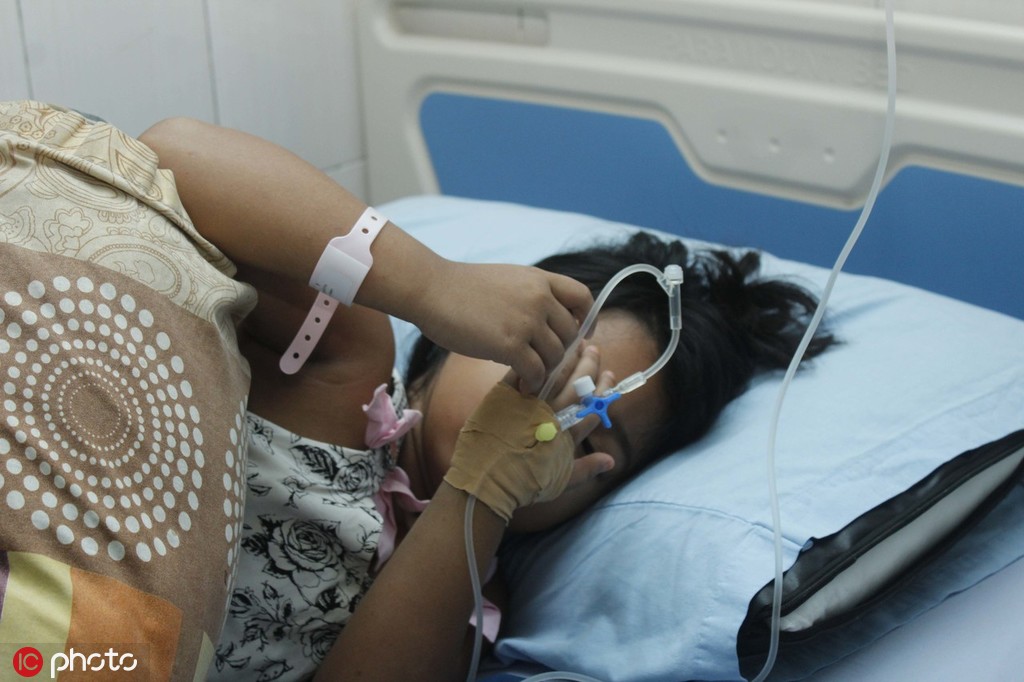Southeast Asia hit by dengue outbreak
By David Ho and Alfred Romann in Hong Kong | China Daily | Updated: 2019-05-25 11:01

Big increases reported in Thailand, the Philippines, Vietnam and Malaysia
It is an annual ritual throughout Southeast Asia: As the rainy season starts and the humidity spikes, the mosquitoes come out. And they come with various diseases, including dengue which seems to be hitting hard this year.
Thailand is experiencing its biggest outbreak in more than two decades. The Philippines, Vietnam and Malaysia have also reported significant upticks in cases this year. The World Health Organization said there are big increases in Cambodia, Laos, China and Australia too.
Health authorities throughout Southeast Asia track the dengue outbreaks every year. Between 2017 and 2018, the numbers dropped but spiked up again this year.
According to statistics from Thailand's Ministry of Public Health, until May 13 this year, 20,733 people were infected with dengue and 25 of them died.
The peak season for dengue has just started, according to the International Association for Medical Assistance to Travellers, which is advising care, particularly in Trat Province along the border with Cambodia and Samut Skhon, southeast of Bangkok.
The Philippines reported more than 60,000 cases and more than 237 deaths as of last month. Vietnam reported more than 52,000 cases, three times as many as in 2018, but only a handful of deaths.
In Malaysia, there were 67 deaths through to the end of April with more than 43,000 cases of dengue reported, also three times as many as last year.
In Singapore, the National Environment Agency said earlier this month that there have been more cases of dengue this year than in 2018.
The NEA reported 3,455 cases until May 16 this year, almost 200 more than were reported in the same period in 2018 and far more than the 2,772 cases reported in 2017. Three people have died.
The number of cases "have been on an upward trend and more than doubled in the past seven weeks", the NEA noted.
As it does every year, the NEA has taken active steps to prevent the outbreak from expanding, with public campaigns to encourage the removal of any pools of water and to educate the public on prevention steps.
"The incidence of dengue has grown dramatically around the world in recent decades," says the WHO. "A vast majority of cases are asymptomatic and hence the actual numbers of dengue case are underreported and many cases are misclassified."
The WHO estimates that there are about 390 million infections every year.
An acute infectious disease, dengue is caused by a virus transmitted by a specific type of mosquito, the aedes mosquito. It causes headaches, joint pain, rashes and fever.
In the more severe cases, it can lead to death. There is no specific treatment, beyond rest and plenty of fluids.
There is no single factor for the rise in dengue cases, according to Gawrie Loku Galappaththy, a medical officer with the WHO's global malaria program.
"As the Philippines is in the middle of the El Nino weather pattern, more people have been collecting water, leading to more breeding areas. Then there's increased urbanization and further environmental changes," Galappaththy said.
Effective vaccine
Developing an effective dengue vaccine has proved difficult, in part because there are four different types, or serotypes, of the disease; but a vaccine was developed and released in 2015 by Sanofi Pasteur, the vaccine unit of French pharmaceutical company Sanofi.
Sanofi said that while the vaccine is effective for patients who have had dengue before, some claim it may put others at an increased risk of a more severe form of dengue.
Still, Sanofi is sticking by its vaccine and says it could help minimize outbreaks. "Public vaccination programs targeting previously infected individuals have the potential to... be a cost-effective intervention," Sanofi said.
Galappaththy at WHO noted that the increase in dengue cases have caused primary level health services, like community clinics, to be overburdened.
Without the capacity or knowhow to handle it, these clinics transferred patients to higher levels of healthcare, causing a bottleneck at those levels, he said.
"The WHO is working with the Department of Health on training the primary level health services on how to handle such cases. This creates a more effective filtration system that won't create a burden on the upper levels," said Galappaththy.
In Thailand, the government has urged all parents and teachers to be on the lookout for the mosquito-borne disease and find ways to prevent mosquitoes from breeding in and around their homes.
"Fifty-two percent of the dengue fever patients are children. We hope all the parents and teachers pay more attention to children, as they are the most vulnerable group for the disease," said the ministry's permanent-secretary Dr Sukhum Kanchanapimai, according to Xinhua News Agency.
Additional reporting by Jihyun Kim in Hong Kong.
For China Daily
























